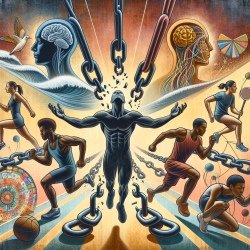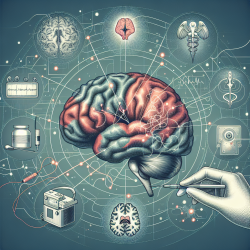Introduction
In the realm of sports, athletes are often perceived as paragons of physical and mental fortitude. However, recent research has uncovered a paradoxical phenomenon termed "Adaptable Depression" (AD), which challenges this perception. This concept, introduced in the paper "The Athlete’s Paradox: Adaptable Depression," sheds light on the unique depressive states experienced by athletes due to neurohormonal imbalances and the allostatic load from intense training.
Understanding Adaptable Depression
The research highlights that athletes may exhibit depressive symptoms distinct from the general population. This is attributed to the constant adaptation required by their bodies to meet the demands of rigorous training, leading to a neurohormonal imbalance. The study delves into the role of neurotransmitters, particularly serotonin, and the concept of allostatic load, which refers to the physiological cost of chronic exposure to fluctuating or heightened neural or neuroendocrine responses resulting from repeated or chronic stress.
Key Findings
- Neurotransmitter Imbalance: Athletes experience changes in serotonin levels due to extensive training, which can lead to a unique form of depression.
- Allostatic Load: The body's adaptation to stress through allostasis can result in a blunted hormonal response, contributing to depressive states.
- Social Stigma: Athletes often under-report mental health issues due to the stigma associated with seeking help, exacerbating their condition.
Implications for Practitioners
For speech-language pathologists and other mental health practitioners working with athletes, understanding the concept of adaptable depression is crucial. It calls for a multidisciplinary approach that integrates insights from neuroscience, psychology, and sports medicine to provide comprehensive care. Practitioners should be aware of the unique biological and psychological stressors faced by athletes and tailor interventions accordingly.
Encouraging Further Research
The introduction of adaptable depression as a concept opens new avenues for research. It suggests the need for further exploration into the precise neurohormonal changes in athletes and the development of targeted therapeutic strategies. Practitioners are encouraged to collaborate with researchers to deepen the understanding of this phenomenon and improve mental health outcomes for athletes.
Conclusion
Adaptable depression presents a nuanced understanding of mental health challenges in athletes, emphasizing the need for tailored interventions and greater awareness. By acknowledging the unique neurohormonal landscape of athletes, practitioners can better support their mental well-being, ultimately enhancing their performance and quality of life.
To read the original research paper, please follow this link: The Athlete’s Paradox: Adaptable Depression










